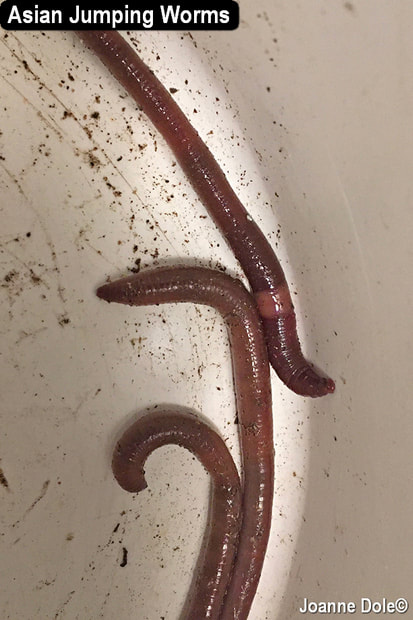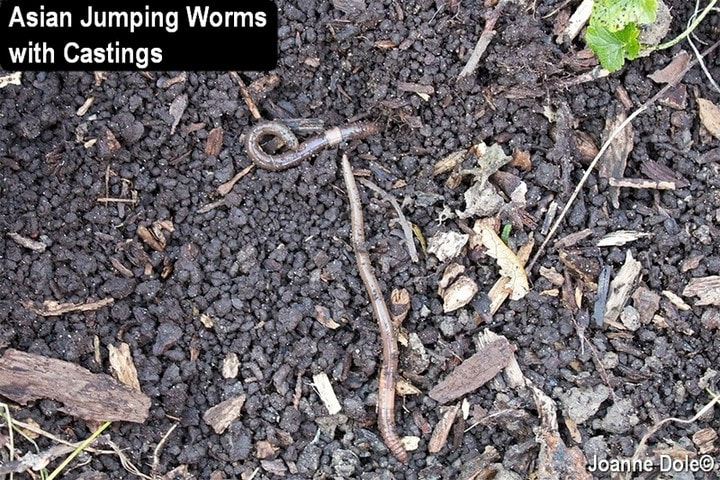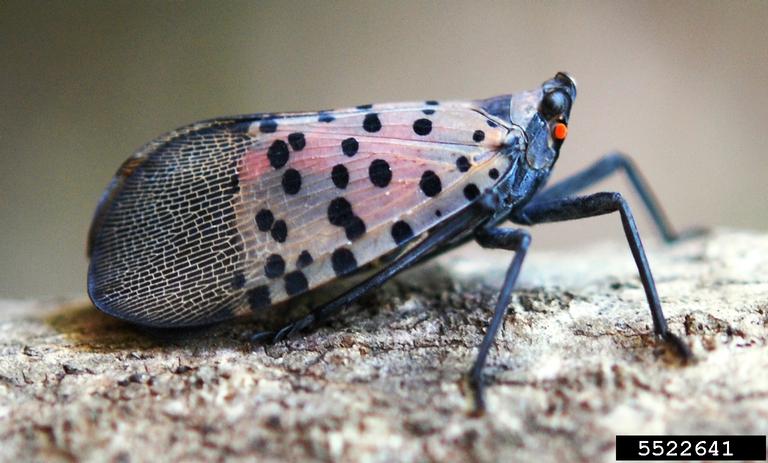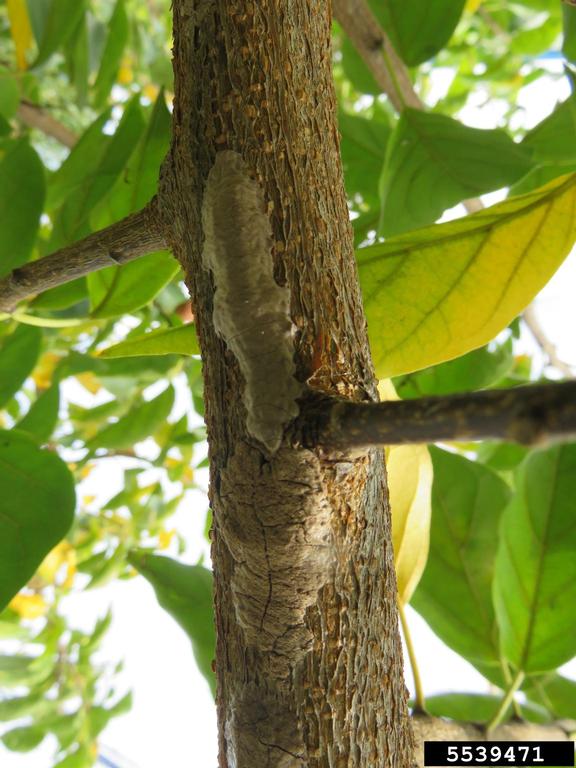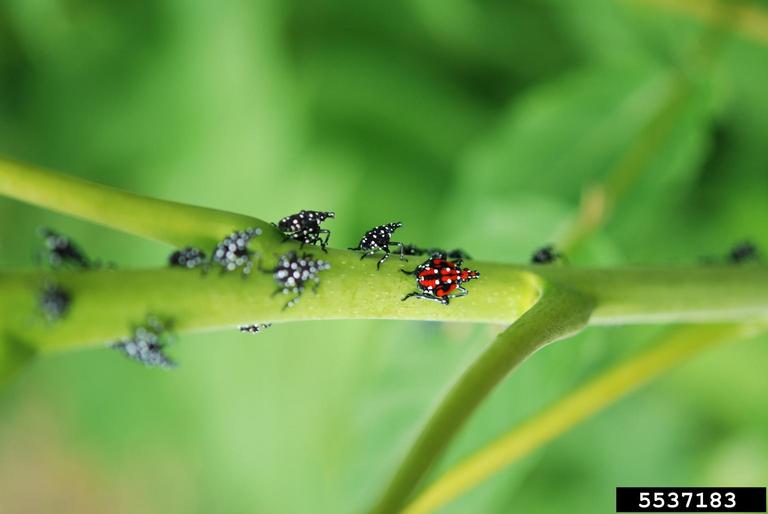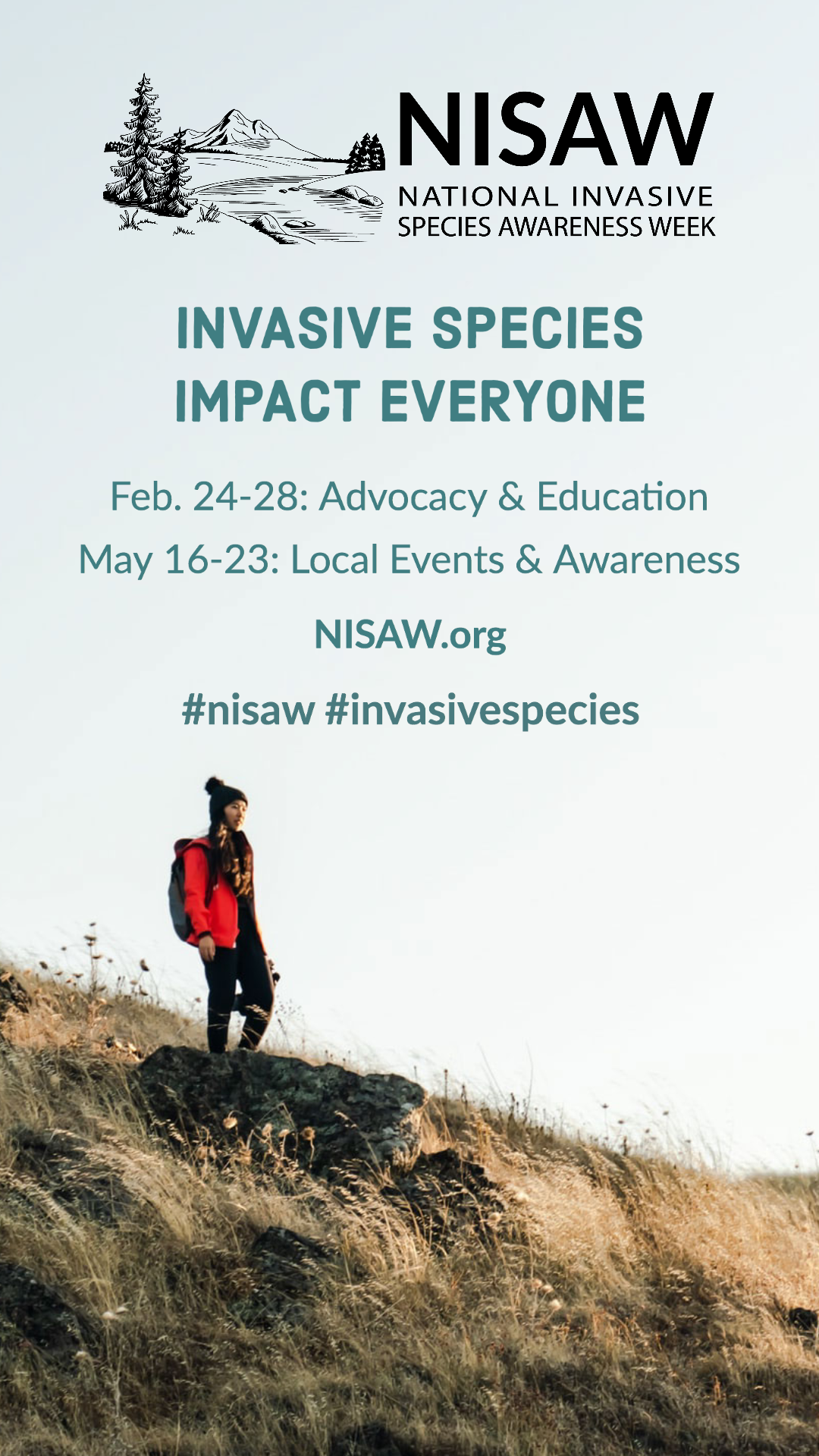|
As the common name suggests, Asian jumping worms (Amynthas spp.) seem to jump or thrash when handled. Little kids and worm lovers might be excited by a find like this in their lawn, garden or woodlot but finding this worm is not beneficial for the native environment. Why Jumping Worms Are A Problem Most worms that you find in the Midwest are European and Asian non-natives. Both of these non-native types alter the native environment, although Asian jumping worms do it at a more alarming rate. Jumping worms grow twice as fast, reproduce more quickly, and can work through organic debris much quicker than other worms. These invasive worms can severely damage the roots of plants in nurseries, gardens, forests, and turf. In areas of heavy infestation, native plants, microorganisms and animals such as salamanders may decline. Asian jumping worms are an annual species; the adults die after the first freeze. But the cocoons, which are about the size of a mustard seed and resemble small pieces of dirt, will survive the winter and hatch when temperatures reach 50°F for a consistent period. These self-fertilizing worms do not need mates and can produce cocoons on their own. Because populations can grow faster than the common European species, they may out-compete existing worm populations. Cocoons can be spread easily in potted plants, on landscaping equipment, mulch, tire treads, and even hiking boots. One telltale sign of an infestation is a very uniform, granular soil created from worm castings that are commonly said to look like coffee grounds. When you scratch the top layer of soil you will see the worms thrashing about with an erratic, snakelike movement. These worms, which can reach 6 inches in length, are much more active than European nightcrawlers. The Asian jumping worm can be found on the soil surface and in the leaf litter, making them easy to find. They can live anywhere from urban parks and suburban backyards to rural forests. You are also very likely to find them in compost piles and along roads. Earthworm species have a body part called the clitellum where egg cocoons are produced. The Asian jumping worm has a prominent clitellum that completely encircles the body, is milky white to light gray, and is flush with the body; the body looks metallic. On European nightcrawlers, the clitellum is raised or saddle-shaped and reddish-brown in color and does not wrap entirely around the body.
Management There is no magic control for these worms once they are found in soil. Asian jumping worms can now be found in the East, Mid-Atlantic, Midwest, and some Northwestern states. Prevention is the best way to keep them from being introduced to new areas. According to Wisconsin Department of Natural Resources, the following steps will reduce the spread of jumping worms:
Until effective research-based control strategies are developed to keep populations of this worm in check, gardeners should closely examine soil, compost, wood chips, and other soil amendments they move on or off their property. Learn how to identify these worms and educate your gardening friends and neighbors so they too can identify these worms. If you do find these worms on your property, never share plants or soil with other gardeners. For more questions regarding Warren County Soil and Water Conservation District programs and/or technical assistance on water or soil questions, visit http://warrenswcd.com or call, 513-695-1337.
0 Comments
Adult SLF- Photo credit: Lawrence Barringer, Pennsylvania Sept. of Agriculture Citizens are urged to be careful not to bring the Spotted Lantern Fly (SLF) home with them as a hitchhiker. People driving out of state or to parts of Ohio with known infestations should inspect and/or wash their vehicles upon return to ensure these insects have not accidentally traveled back with them. Spotted Lantern Fly (SLF) which is an invasive plant hopper that is native to China was found in Pennsylvania in 2014. In late 2020, SLF was found in southern Ohio in Mingo Junction and in northern Ohio, Cuyahoga County in 2021. It is a major pest of crops including grapes, apples, hops, walnuts and hardwood trees. Nymphs and adults prefer to feed on the invasive tree of heaven (Ailanthus altissima) but can feed on more than 70 plant species, and has the potential to greatly impact the viticulture, tree fruit, nursery, and timber industries. The insects suck sap from stems and branches which can weaken and damage the plant. The feeding can result in oozing sap, wilting, leaf curling, and dieback. In addition, during feeding the SLF secretes honeydew which can buildup on and underneath the plant, which in turn promotes the growth of black sooty mold. Black sooty mold around the base of plants or oozing sap may indicate the presence of the spotted lanternfly, however other pests can cause these symptoms as well. Black sooty mold is harmless to people however it causes damage to plants. In counties infested and quarantined for spotted lanternfly, residents report hundreds of these insects that affect their quality of life and ability to enjoy the outdoors during the spring and summer months. Spotted lanternflies will cover trees, swarm in the air, and their honeydew can coat decks and play equipment. Egg mass- Photo credit: Kenneth R. Law, USDA APHIS PPQ Immature SLF- Photo credit: Lawrence Barringer, Pennsylvania Sept. of Agriculture SLF will lay eggs beginning in October through the beginning of winter. The egg masses of the SLF are small, grey masses protected by a waxy covering. After hatching in late spring, the SLF goes through four nymph stages. During the first three they appear black with white spots, and in the last stage, which typically occurs during mid-summer, they are red with white dots and black stripes. During the late summer and autumn, the SLF is in the adult moth stage. These adults are larger (approximately 1 inch), with black bodies and brightly colored wings.
Spotted lanternfly, which likely arrived on imported goods from Asia, is a plant hopper and not a strong flier. It is moved greater distances by people moving infested materials. It lays eggs on almost any surface, including vehicles, trailers, outdoor equipment, patio furniture, etc. Egg masses can be removed by scrapping with a hard or rigid tool and disposed of into a container of rubbing alcohol. Early detection is critical to prevent economic and ecological losses. The public has played a key role in detecting spotted lanternfly and the success of stopping its spread depends on help from the public to look for and report signs of the pest. If you suspect a spotted lanternfly infestation, at any life stage, please report the finding to the Ohio Department of Agriculture Plant Pest Control (614-728-6400, [email protected]), your local OSU Extension specialist (https://extension.osu.edu) or by using the Great Lakes Early Detection mobile reporting app (https://apps.bugwood.org/apps/gledn/). For more questions regarding Warren County Soil and Water Conservation District programs and/or technical assistance on water or soil questions, visit http://warrenswcd.com or call, 513-695-1337. According to the Ohio Department of Natural Resources and the National Invasive Species Council, invasive species are defined as being "both non-native (or alien) to the ecosystem under consideration and whose introduction causes or is likely to cause economic or environmental harm, or harm to human health." Ohio has several flora and fauna invasive species. While these species can out compete our native species, we can help to minimize their negative impacts!
-When selecting plants for your property, go native! Native plants provide a host of benefits from aesthetics to wildlife. Learn to identify invasive plants so you can remove them and control their growth on your property -If you are a water recreational enthusiast, stop aquatic hitchhikers by cleaning all of your equipment before putting in at other waters. This prevents the transport of invasive aquatic species. -Don't move firewood! This can transport invasive species that harm our trees and native ecosystems. Buy firewood where you will be burning it and look for certified heat-treated firewood. -Get help. There are many professional specialist available to help you combat invasive species:
|
Details
Warren County SWCD Staff BlogA blog to keep you informed on all the latest news at Warren County SWCD and in the conservation world. Archives
May 2024
Categories
All
|
|
|
Contact:PHONE: (513) 695 - 1337
EMAIL: [email protected] HOURS: Monday - Friday 7:30am - 4:00pm (except holidays) Connect:Warren County Soil & Water Conservation District Copyright © 2016
Warren SWCD Privacy Notice. Emails are serviced by Constant Contact. Constant Contact's Privacy Notice. |
